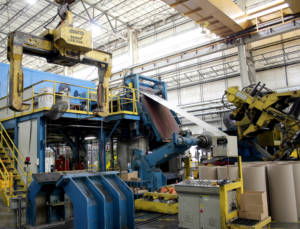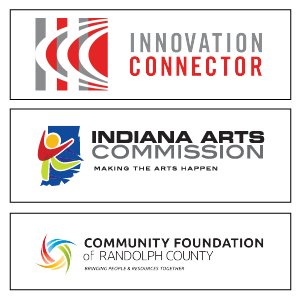Jeffersonville Port Invests In Infrastructure, Seeks New Tenants
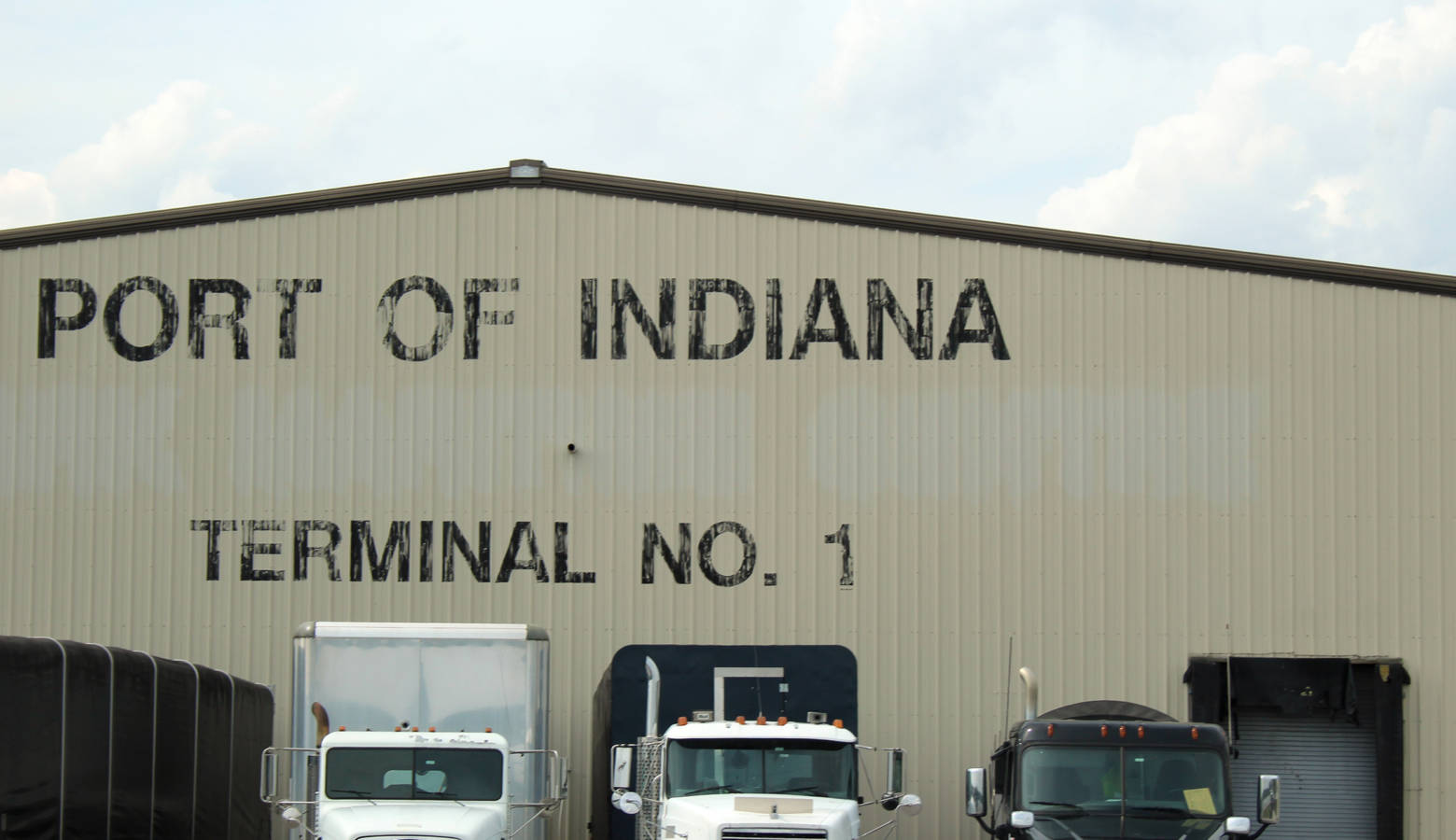
The first stop in our series on the Ports of Indiana was Burns Harbor, an international maritime facility in the heart of steel country. Four hours down Interstate 65, the Port of Jeffersonville is less a port and more a manufacturing hub that happens to be on the Ohio River.
For the next part of our series, Indiana Public Broadcasting’s Annie Ropeik reports Jeffersonville is pushing ahead with expansions to cement its place in the Midwest industrial corridor.
Indiana’s three ports have some things in common – especially grain and barges. Chuck Long of Consolidated Grain and Barge, or CGB, knows a bit about those.
Long is the Jeffersonville operations manager for the huge international company, which collects grain from farmers and barges it to the Gulf of Mexico for export.
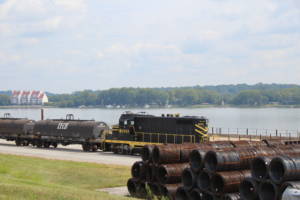
A locomotive hauls steel coils in cylindrical train cars through the Port of Indiana-Jeffersonville, with the Louisville suburbs seen across the river. (Annie Ropeik/IPB News)
Long says they also move products for other companies that live at the Port of Indiana-Jeffersonville.
“Think of it as a cul-de-sac in a neighborhood,” he says. “We’re the person that moves it around in the neighborhood.”
CGB is one of the port’s stevedores. They pick up products and deliver materials on the roads, docks and train tracks that connect this place. Soon, they’ll have more room to do it. Jeffersonville is adding rail and barge capacity with the help of a $10 million federal infrastructure grant.
Officials hope those upgrades will bring in more bulk cargo – things counted by weight – but for now, the port’s other mainstay is steel. That’s the business of nearly half of its tenant facilities.
Mike Pavic runs one of them: Michigan-based Mill Steel. They barge in raw metal from the U.S. and beyond, and trucks out finished products.
“They can use it for furniture – it goes and gets stamped and they can use it for different parts of auto parts,” he says. “It can be used for a lot of different things.”
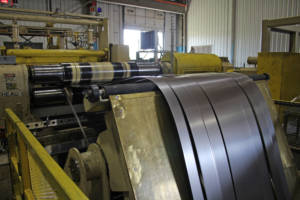
A steel coil is rolled out and slit to various widths for different customers at Mill Steel. (Annie Ropeik/IPB News)
Other companies here melt steel from scrap, or clean the rust off it using acid (that’s called pickling). And they all move their products in different ways – barges, trains and trucks.
Steel Dynamics, based in Fort Wayne, doesn’t use the river at all at its Jeffersonville plant. But manager Chris Winger says they’re still glad to be part of this neighborhood.
“There is a portion of it that’s a steel campus — it behaves like a steel campus, right?” he says. “It just brings various synergies to that whole process of the steel market in the U.S.”
At Winger’s factory, miles of steel coils get treated for use in construction.
“We run ‘em through a furnace, get ‘em nice and hot, dip the steel in a bath of molten zinc,” Winger says. “We cool it off … make it nice and flat. We wrap it back up and we sell it to a customer or we paint it. That’s it in a nutshell.”
From steel cargo that never touches the river, to barges being emptied of fertilizer and road salt – port director Scott Stewart says all this probably wouldn’t be here if so much of Indiana’s border wasn’t, in fact, water.
“People don’t understand – they think of Indiana as the crossroads of America, very ground transportation-oriented, interstate highway-oriented in that context,” he says. “But they don’t think about Indiana as being a maritime state. Indeed it is.”
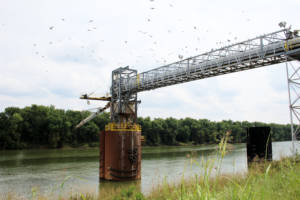
This conveyor belt moves grain from the Consolidated Grain and Barge elevator at the Port of Indiana-Jeffersonville into barges docked at this berth, known as a dolphin. (Annie Ropeik/IPB News)
While Indiana may not be coastal, having both land and water to work with can be useful. And Stewart wants his port to make the most of both. As it adds new rail and barge capacity, he says, there’s also search for new tenants to complement what it already has.
Port officials cut the ribbon this fall on another new steel processing facility, owned by South Korea-based POCSO. The port has 300 more acres open for development.
